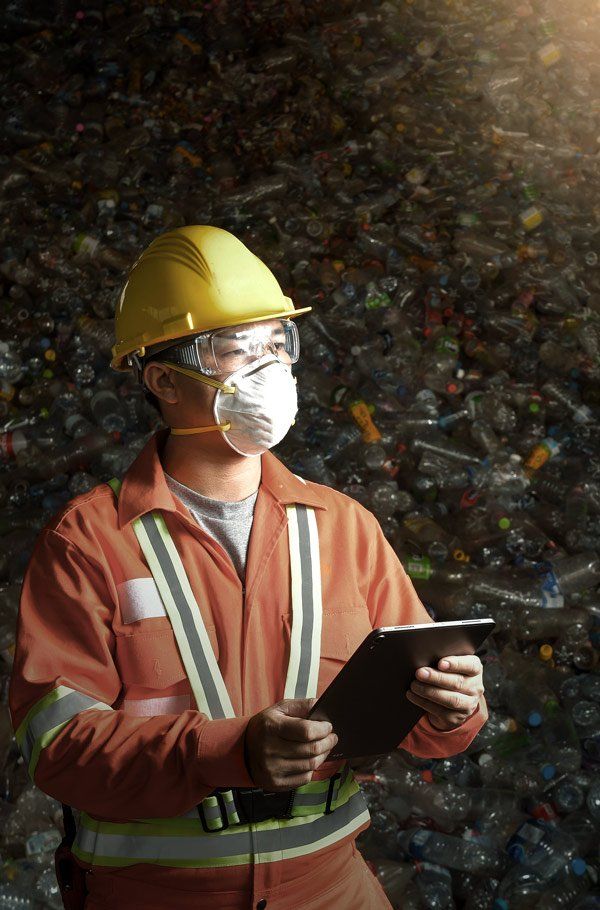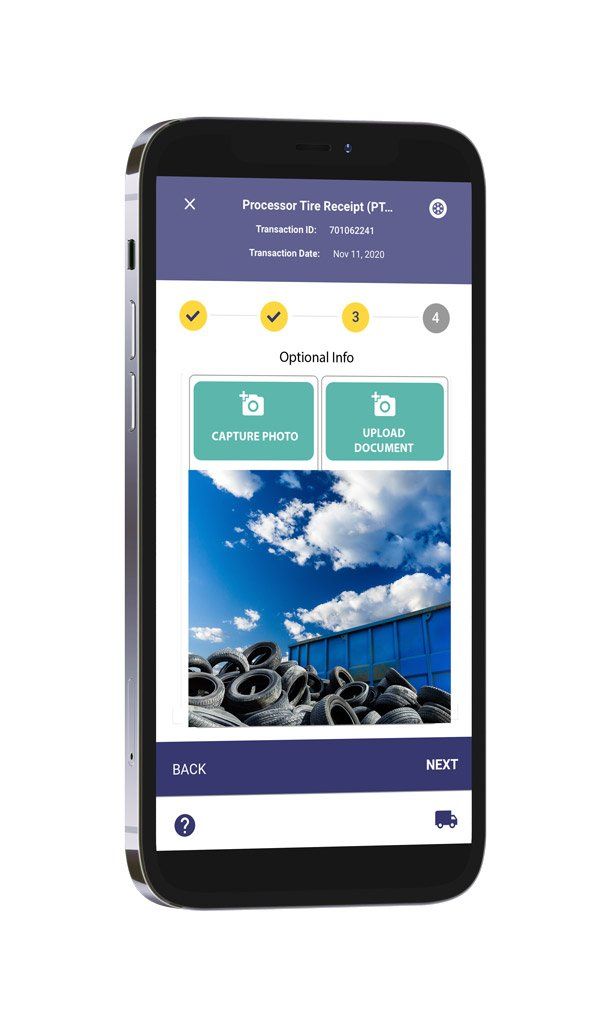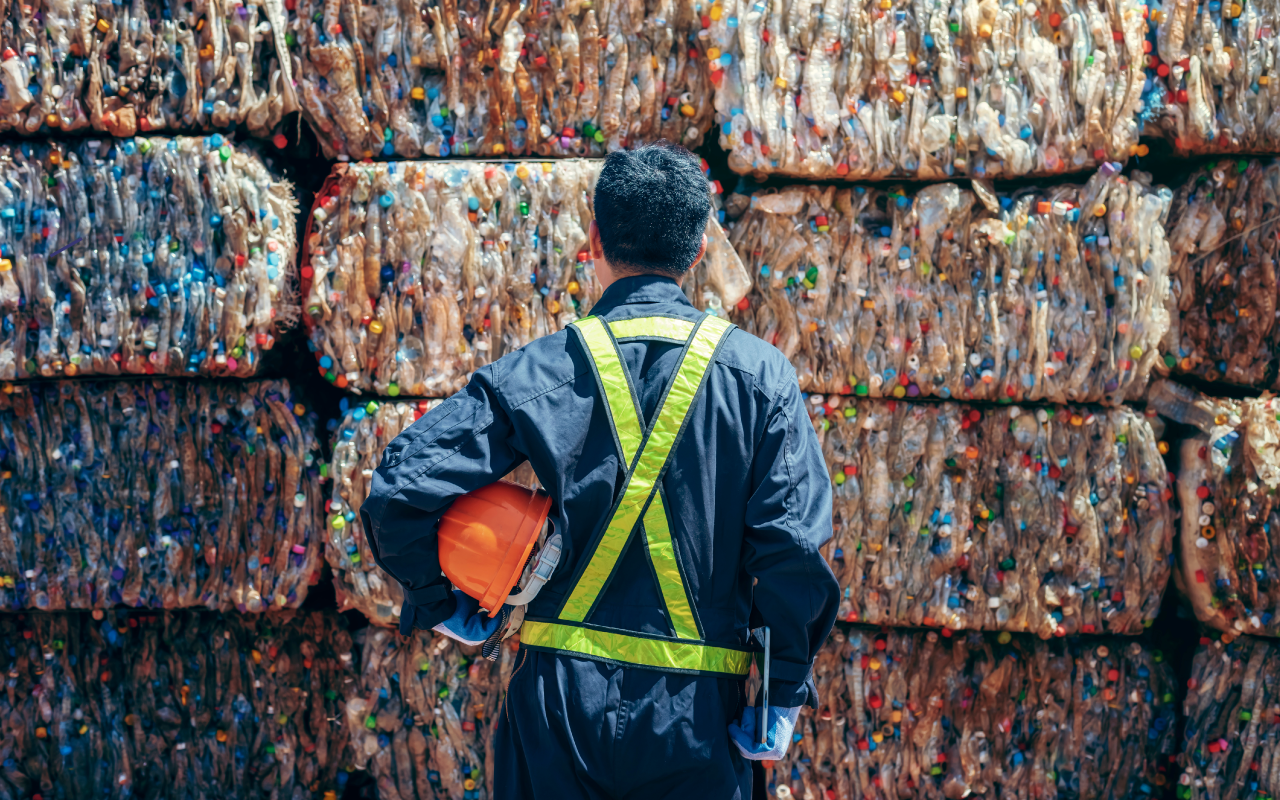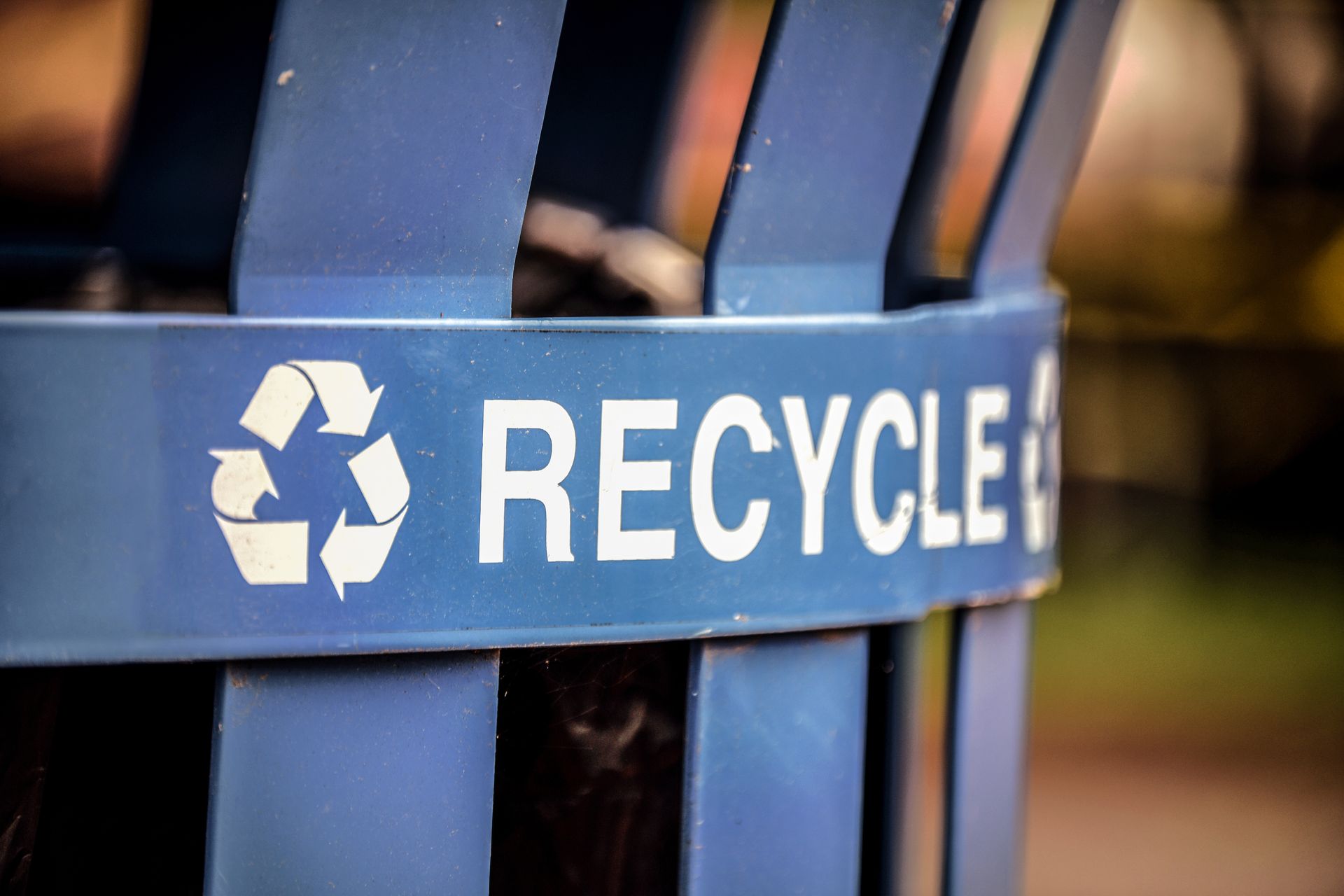MYTH 3: "The future is stable"
"We know and can predict the direction that the recycling & waste management industry is taking, so it’s easy to prepare for the future."
This is the third installment of our eight-part myth-busting series. In this series, we explore some common myths in the recycling and waste management industry, explain how these myths came about and why they persist, and share some revolutionary insights that help program managers see things in a better way.
The changing trends of the waste and recycling management are sometimes easy to predict from a distance.
For instance, we know that digitization is becoming increasingly important for a variety of industries – it's no stretch of the imagination to see that this would be the case for waste and recycling as well. It’s easy to take comfort in the idea that we can predict what changes will come, which is precisely why this myth persists.
But these trend predictions don’t always prepare us for the corresponding changes to our businesses and the day-to-day work that we do. Couple this with legislation and regulatory changes that can be implemented rapidly, change on the whole is hard to predict.
Because of this, our methods for managing waste and recycling programs have had to become increasingly nimble: after all, changes may come that alter your ESG or business goals, how you define your jurisdiction, what specifically you need to track, and how and to whom you need to report your results to.
Flexibility: The Way of the Future – And Present

We’ve talked before about the importance of digitization for recycling and waste management, and how digital software solutions are the only ones that adequately address the increased volume and demands of the industry.
Digitization is also the only way to get the flexibility needed to adapt to changes in our programs as they come. Again, changing volume demands, business models, more oversight that requires detailed reporting all require a quick response from those managing waste and recycling programs.
But when it comes to digitization, there are plenty of options. Many organizations opt for building custom software, either by commissioning a software solution through a custom software developer or working with their IT department to develop the solution in-house.
It sounds like a reasonable option. After all, if the software is built specifically for your organization, how could it fail to do what you need it to?
But remember – the future is anything but stable. Flexibility in the way you manage your recycling or waste program is not a “nice to have” - it’s entirely mandatory, and only becoming moreso.
For instance, many organizations have always had to report on how much material (by weight or volume) they’ve diverted from landfill. But for many, it’s become mandatory to also report on the greenhouse gas (GHG) emission reduction they’ve achieved. Is it easy, fast, and inexpensive for organizations with existing, custom-built software to add this feature to their solution?
So, the important question to ask is, what solution will ensure the most flexibility so your program can always easily respond to the changes that come your way?
In a world of rising digitization, the solution industries searching for flexibility increasingly turn to is Software-as-a-Service (SaaS).
What is SaaS?

A SaaS solution is a pre-made, industry-specific solution that’s usually delivered over the Internet – meaning users don’t have to install any hardware to start using it. They typically log in from a web browser and have access to the system right away – saving time, avoiding IT headaches, and simplifying access to the solution (you can log in anywhere, as long as you have Internet connection).
Typically, users pay a monthly fee to use SaaS solutions. The monthly cost is usually relatively low, as a larger userbase uses the software and the cost is split amongst them. As well, unlike with custom software, the SaaS provider pays for the cost of updating, maintaining, and hosting the solution, not the users.
Because the userbase is larger than with a solution that will only be used by one organization, SaaS solutions typically come with a larger set of well-defined features than their custom-built counterparts.
When we look at SaaS for the waste and recycling industry in particular, this array of features plays a big role in supplying users with the flexibility that makes SaaS so attractive. Think about it: these features may be ones you did not consider when mapping out your needs for a custom-built solution, or ones you didn’t need before but do now.
To go back to our previous example, if your organization suddenly had to start tracking GHG emission reduction in addition to landfill diversion, you could just start using the SaaS solution’s GHG measuring feature. This is quicker and easier than having an IT department or custom developer create, test, implement, and train on a brand-new feature – and it comes at no additional cost or time delay.
Weighing Your Options: A Key Perspective
To summarize what we’ve discussed so far, as a manager of a waste or recycling program, you have options when it comes to choosing a management system: you can use a paper-based system (i.e., no digital solution), build custom software, or use an existing software solution, of which SaaS is a viable option.
These systems are not equal, and it takes detailed, careful analysis to evaluate the pros and cons of each. And usually, the final decision comes down to the cold, hard financials.
But the cold, hard financials need to be considered carefully, as well.
Rather than simply comparing the cost of using paper, commissioning software, or paying a monthly SaaS bill, it’s important to consider the Total Cost of Ownership (TCO) – a key financial metric that gives insight into the direct and indirect costs of each type of system.
A TCO analysis helps you consider not just the cost you’ll pay today or this month: it will help you determine which solution will bring you the highest ROI while ensuring you remain futureproofed and flexible to your changing business needs. Ultimately, it can show you which solution gives you the best value over time and across your waste or recycling program.
Conducting a TCO Analysis for Your Organization
Every organization’s budgetary, time, and feature requirements are different, and these are factors that have to be taken into account when conducting your TCO analysis. But we’ll give you some starting points to consider when you evaluate each of these three options (paper, custom software, or SaaS) so you can determine which one holds the most value for you.
Option 1: Paper-based system

The visible costs associated with this option include:
1
Licensing of data management software (like Excel, SAP or IBM InfoSphere)
2
Office supplies (paper, ink, printer, clipboards, etc.)
3
Mailing costs
4
Salaries for data entry clerks (who manually enter the data from paper forms into the data management tool)
This is truly a get-what-you-pay-for system: while this solution seems to cost you the least in CAPEX, it also gives you the least functionality. It offers no analysis on how your business is doing (e.g. performance metrics or KPI tracking). That information has to be manually extracted from raw data – requiring time, effort, and resources. As well, there are other significant costs, including revenue leakage due to false payments (this system does the least to protect against fraud and human error) and high auditing and compliance costs every year.
In terms of flexibility, any new changes simply require more work – more time, money, and effort to address.
Option 2: Custom-built software (including creating new software or updating your existing custom solution)

When it comes to commissioning new custom software, prices can be exceedingly high: you may have to spend millions of dollars depending on the level of complexity. If you already have a custom-built solution that needs to be updated to suit new business and operational needs, you can end up spending up to 40% of the initial cost to complete the upgrade.
Here are the typical visible costs for this type of solution:
1
Initial development cost
2
Modifications and updating cost
3
Internal management cost (direct management requires at least 1 full-time IT professional or project manager) (recurring)
4
Annual hosting cost (recurring)
5
Annual security maintenance (recurring)
6
Annual modernization maintenance (recurring)
These are only the most apparent costs when you map out the creation of your custom-built software – and they are pretty high. Should later development be needed to add new features and tools to the software (#2 on the list above), the cost can become prohibitively expensive.
Companies who once opted for a custom-built solution often find themselves resigned to using outdated business practices to suit their old software; the cost to update or modify is simply too high.
Aside from what you can expect to pay, there are a host of hidden costs associated with custom-built software. These include:
1
The cost of waiting for the development to finish: Development time can be lengthy, even unpredictable, as it often goes on longer than initially scheduled. During this time, the software is only costing you money but is not benefitting you at all. This is unlike a SaaS offering, which you can start using right away.
2
Training and support: When implementing a new custom solution, training and support will be your organization’s responsibility. This task can be costly and time-consuming to take on.
3
Uncertainty and risk, including:
- a. Operational chaos due to delays: Delays are common and uncontrollable with custom solution development or updating. With a network of organizations working with you, you cannot afford delays or missed deadlines because participants are expecting the new system by a particular date. With other solutions, like SaaS, you cannot miss development deadlines, because the solution already exists.
- b. Not meeting your requirements: Having developers, especially those who have very limited knowledge of your industry, understand what you need is difficult; miscommunication is common. Unfortunately, the only way to know if custom software does what you need it to… is to pay to have it developed. Putting down a large sum of money on something you cannot see is always risky – and it is avoidable. With pre-existing SaaS solutions, you can demo the software and see whether or not it works for your organization – thereby avoiding any unnecessary uncertainty.
- c. Regulatory and financial changes: developing or modifying custom software requires a large, upfront capital investment. What happens to that investment if something happens to hurt your business (such as common regulatory changes)? The sad reality is, investments are unlikely to be recouped in such a situation.
- d. Low software quality and security breaches: You cannot assess the storage, stability, bugs, or security capabilities of a custom-built solution until you’ve spent a lot of money and started using it. Again, this is an unnecessary investment that could have been put towards a good quality SaaS solution that already exists and has been tested.
The reality is, many organizations will ultimately invest more money in a custom solution than they initially budgeted for. There are endless risks and uncertainties associated with this type of system. With custom software, you need to spend a lot of money upfront and put more and more money into it, with little certainty on how the software will turn out. This makes the decision to go with a custom-built solution riskier and harder to justify to directors, Boards, and other governing bodies.
Option 3: a proven SaaS solution
When you look at the pure financials, the immediate visible benefit of SaaS is cost saving. SaaS solutions typically cost a fraction of their custom-built counterparts.
Additionally, there are a host of other hidden benefits. These include:
1. Cost certainty: The monthly charge to use SaaS is pre-determined, so you know exactly how much you need to pay. This is unlike custom-built software, which can always have new, unanticipated costs.
2. Quality certainty: Because this software already exists, you can demo the SaaS solution or hear testimonials from those already using it. This helps you have confidence that the quality is worth the price before you make a purchasing decision.
3. Futureproofing & Flexibility: Since your organization is not the only one using the system, you get the most features with this type of solution. SaaS developers incorporate best practices to improve products for their wide customer base. (The software must service many different people and groups, after all.) Additionally, the SaaS company is responsible for ensuring the software is always updated – updates you neither have to worry about or pay additional fees for.
Unlike a paper-based system, SaaS offers you a host of benefits at a fair price. Unlike a custom-built solution, you do not need to spend a large sum of money upfront with SaaS. If at any point you no longer think the solution is worth it, you can simply end your subscription. This makes this option by far the most beneficial and the least risky.
One Final Resource…
After completing your own careful analysis, we’re confident you’ll find the right solution for your organization – especially one that gives you the flexibility to address any changes that come your way.
If, like us, you’re intrigued by the benefits of SaaS, we want to leave you with a final resource.
Here’s a quick criteria list to keep in your back pocket as you consider different SaaS solutions for managing your waste or recycling program. You’ll want to look for these things to find the best solution out there:
- The company knows your industry and has built a tried, tested, and proven true solution that meets your needs
- The product is futureproofed, flexible, and has a clear development roadmap.
- The company has a solid reputation, takes partnership seriously, and you get a sense from the people you talk to that you can rely on them.
- The company offers support and training to everyone in your program
A solution that provides all of this is one worth pursuing for your organization, especially as changes come your way.

About Diversys
Diversys is proud to have its roots in Ontario, Canada - a province widely recognized for its leadership in EPR and sustainability. Since 2019, we've been dedicated to creating innovative software solutions that drive progress toward a world without waste.
Our story is a testament to the power of hard work, customer loyalty, and big ideas. We are committed to empowering organizations with the waste recycling software solutions necessary for achieving a sustainable future. Our cutting-edge software platform is helping organizations achieve their ESG goals, meet reporting obligations, and improve operational efficiency for their recycling programs.
Our commitment to delivering world-class solutions that drive meaningful progress towards waste reduction and a more sustainable future is unwavering. Our team of industry experts is ready to help you navigate the rapidly-evolving waste management landscape as we progress toward a circular economy.








